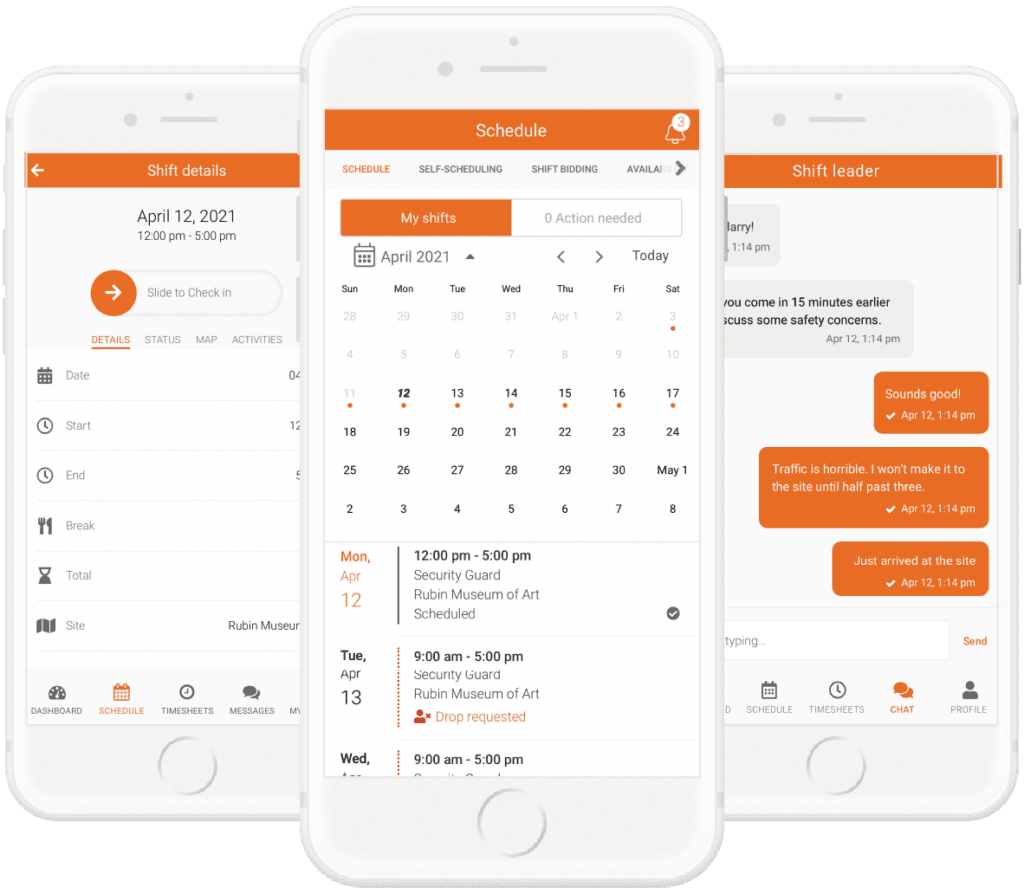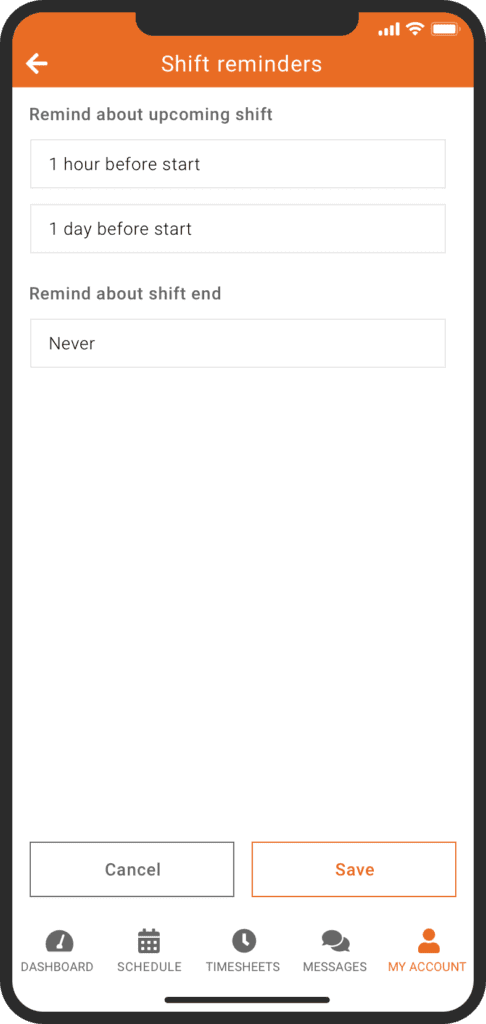
In today’s fast-paced corporate world, businesses often require 24/7 coverage to meet customer demands. Many companies adopt rotating shifts to ensure seamless operations as part of their workforce management strategy.
How do you schedule your staff if your company is open for fourteen, sixteen, or twenty-four hours daily? Do you assign one team to work only at night and the other to work only during the day? When do your staff have a vacation? When you consider the mechanics, it’s easy to see how scheduling may quickly devolve into a chaotic nightmare. Fortunately, a simple solution to this quandary is the rotating shift.
This blog post will explore rotating shifts, highlighting their advantages, disadvantages, and best practices for implementing them effectively. As a leading provider of workforce management solutions, Celayix understands the importance of optimizing schedules to maximize productivity while prioritizing employee well-being.
Understanding Rotating Shifts

Rotating shifts refer to a workforce scheduling practice where employees work different shifts at different times of the day or week. This approach ensures that staffing needs are met throughout the day, ensuring continuous operations without overburdening employees or incurring excessive overtime costs. According to a study by the Bureau of Labor Statistics, an estimated 2.4% of the working population works rotating shifts.
Rotational shift work, commonly known as rotating shifts, is a dynamic scheduling system where employees follow a cyclical pattern of working various shifts, including the day, night, and any necessary swing shifts. This approach allows businesses to maintain 24/7 coverage efficiently while promoting employee satisfaction and productivity.
On the other hand, fixed schedules follow a different model, where different groups of employees are assigned to work specific shifts consistently. For instance, one group handles the day shift, another the night shift, and a third group manages the swing shift. The fixed schedule remains unchanged unless intentional shifts are made to individual employees’ assignments.
Example of Rotating Shifts
To illustrate the concept further, let’s take the example of a restaurant operating from 8 a.m. to 12 a.m. While the restaurant may not be open for all sixteen hours, employees are engaged in prepping and cleaning tasks between those times.

A straightforward scheduling approach could divide the sixteen-hour timeframe into two eight-hour shifts. The first shift runs from 8 a.m. to 4 p.m., and the second shift operates from 4 p.m. to 12 a.m.
The decision now lies in determining whether to allocate one team consistently to the day shift and the other to the night shift. This approach might suit office work or manufacturing where one shift is mainly similar.
However, specific shifts may yield higher profits for businesses like restaurants than others. Restricting one group of employees to less-desirable shifts could harm team morale and productivity.
- The rotating shift system comes into play to ensure fair distribution and allow all employees to experience higher-earning shifts. In this system, during the first week, “Team A” works the opening shift (8 a.m. to 4 p.m.) while “Team B” handles the closing shift (4 p.m. to 12 a.m.).
- In the subsequent week, “Team B” takes on the opening shift, and “Team A” works the closing shift. This rotation continues cyclically, allowing every employee to work desirable and less-desirable shifts, creating a balanced and productive team.
Types of Rotating Shifts
Human resource specialists have developed several sorts of rotational schedules over the years. Depending on management practices, your organization may profit from one or more rotating shifts. Human resource managers should become acquainted with several forms of rotating shifts.
This allows them to comprehend several staff rotation plans and select the one that works best for their organization.
Pitman’s Rotating Shifts Schedule
Employees on the Pitman shift pattern receive every other weekend off to attend family and social gatherings during regular hours. The ships here are 12 hours long and have four crews rotating around. Workers usually work up to three days in a row to prevent overworking them.

Here’s an example of a Pitman shift schedule:
Two days of work followed by two days off
Two shifts on, then three days off
Three days of work followed by two days off
When the two-week cycle ends, workers exchange shifts, beginning with night shifts and ending with day shifts.
The 2-2-3-2-2-3 Rotating shifts schedule
The 2-2-3-2-2-3 schedule is a 28-day cycle with a rotating shift. The 12-hour shifts in this schedule are alternated in the following pattern:
- Three-day workweeks
- Two days off
- 2-day shifts
- Three days of vacation
- Shifts of two nights
- Two days off
- Shifts of three nights
- Two days off
- Shifts of two nights
- Three days of vacation
- 2-day shifts
- Two days off

The advantage of this rotating schedule is that workers may take regular breaks without working more than three consecutive days. Employees in the construction and healthcare industries have rigorous 12-hour hours followed by many days off, as examples of this style’s rotating shift pattern.
DuPont’s Rotating Shifts Schedule
Like the Pitman rotating shift, the DuPont shift schedule has four teams working 12-hour shifts, but the personnel rotation schedule is a bit more complicated. This shift changes from day to night in a four-week rotation at DuPont. Here’s an illustration:
- Four-night shifts followed by three days off
- Three days of work, followed by one day off
- Three nights of work, followed by three days off
- Four-day shifts followed by seven days off
There are consecutive offs here since the schedule may be a little stressful, but the DuPont system offers workers adequate time to recoup by having numerous days off. These days off culminate in a week-long break at the end of the cycle.
Managers should use caution when it comes to the DuPont shift schedule. Workers here have more flexibility in their everyday lives and spend more time with family and friends, but the trade-off is longer work hours. It could fit certain country employees who don’t mind working harder instead of taking more time off.
Advantages of Rotating Shifts:
Better Work-Life Balance:

A key advantage of implementing rotating shifts is the opportunity it provides for employees to achieve a better work-life balance. Employees can enjoy extended periods off by working different shifts rotationally, enabling them to spend quality time with their families, pursue personal interests, or recharge. This flexibility in scheduling can lead to improved job satisfaction and overall well-being. According to a survey by the International Foundation of Employee Benefit Plans (IFEBP), 73% of employees reported that work-life balance is critical to job satisfaction.
Enhanced Productivity:
Rotating schedules can help combat employee burnout and fatigue, improving productivity and job performance. By avoiding the monotony of fixed schedules, employees experience increased job satisfaction and remain motivated to perform at their best. A study published in the Journal of Occupational and Environmental Medicine found that companies with rotating shift schedules had a 43% lower risk of experiencing low job satisfaction among employees.
Improve Employee Satisfaction:

Companies can significantly increase employee satisfaction by offering employees greater control over their work schedules and introducing variety through rotating shifts. Empowering employees to have a say in their work hours fosters a sense of autonomy and trust, leading to higher morale and loyalty. A Society for Human Resource Management (SHRM) study revealed that organizations with flexible scheduling policies had a 12% higher employee retention rate than those without.
Increased Coverage:
For businesses that operate around the clock, such as hospitals, call centers, and emergency services, rotating shifts ensure continuous coverage. This staffing strategy ensures that skilled employees are available at all hours to meet customer demands promptly. A report by the U.S. Bureau of Labor Statistics (BLS) highlighted that industries employing rotating shifts experienced a 22% reduction in labour shortage compared to those with fixed schedules.
Better Use of Resources:
Rotating schedules allow companies to optimize their workforce and resources more efficiently. Instead of relying solely on overtime compensation to cover specific shifts, companies can spread the workload among employees, reducing overtime costs and improving budget management.
Example: A manufacturing plant using rotating shifts can balance production capacity during peak and off-peak hours without incurring unnecessary overtime expenses.

Enhanced Communication and Collaboration:
Implementing rotating shifts can foster teamwork and collaboration among employees. Exposing team members to diverse colleagues with varying expertise and perspectives encourages knowledge sharing and mutual learning, leading to a more cohesive and innovative work environment. A study published in the Journal of Applied Psychology found that teams with higher levels of diversity demonstrated a 45% increase in decision-making efficiency compared to less diverse teams.
Disadvantages of Rotating Shifts
Reduced Consistency and Planning Challenges:
One primary disadvantage of rotating shifts is that some employees may prefer a consistent schedule, such as a fixed shift. With fixed shifts, employees always know whether they are working days or nights, making it easier to plan their personal and professional lives accordingly. In contrast, rotating schedules introduce variability, requiring employees to keep track of their current week within the rotation.
Example: For single parents, knowing their consistent shift allows them to arrange childcare and plan family activities more effectively.
Physical Impact on Employees:

The human body operates on a natural 24-hour cycle, known as the circadian rhythm, where daytime activity and nighttime rest are inherent. When employees are forced to work night shifts, their circadian rhythm is disrupted, leading to potential sleep deprivation, gastrointestinal disorders, and cardiovascular issues. While some individuals can adapt to rotating shifts within a few days, others may take longer to adjust or may only partially synchronize their circadian rhythms.
Example: Studies have indicated that shift workers are at a higher risk of developing health problems, including cardiovascular diseases and sleep disorders, due to the challenges of adjusting to irregular work hours.
Decreased Predictability and Stability:
Rotating schedules can create personal and professional uncertainty in employees’ lives. Frequent changes in workdays and times can make it difficult for individuals to plan and coordinate events, leading to a lack of stability and predictability in their schedules. This lack of structure can induce stress and disrupt employees’ overall well-being.
Example: Employees may need help to make social commitments or engage in extracurricular activities due to the constant shifts in their work schedules.
Increased Fatigue and Burnout:

Adhering to rotating schedules can result in heightened fatigue, as employees must continuously adjust to changing sleep patterns and work hours. This ongoing adjustment can increase the risk of burnout, as individuals may not have sufficient time to rest and recover between shifts.
Example: Fatigued employees may experience decreased productivity and diminished engagement, ultimately affecting overall team performance.
Negative Impact on Social and Family Life:
Rotating schedules can also affect employees’ social and family lives. The lack of a consistent schedule may make it challenging to plan gatherings or spend quality time with friends and loved ones, potentially leading to feelings of isolation and detachment.
Example: Employees may need help maintaining regular family dinners or attending social events due to the constant shift changes.
Difficulty Finding Childcare and Support Services:
Individuals working rotating shifts may encounter difficulties in finding suitable childcare or accessing other essential support services. The unpredictability of their work schedule may need to align with the availability of childcare facilities, making it challenging for working parents to secure consistent care for their children.
Example: Parents may struggle to find reliable childcare on a week-to-week basis, impacting their ability to maintain a work-life balance.
Creating a Rotating Schedule with Celayix Scheduling Software:
Step #1:
Define Hours of Operation With Celayix, the first step in crafting a seamless rotating shift schedule is to determine your business’s hours of operation. Our intuitive software allows you to set the duration of each shift, whether it’s 8, 10, or 12 hours, and establish precise start and end times for each shift.

Step #2:
Assess Shift Requirements Celayix helps you analyze your business needs and workload demands to determine the number of shifts required to cover essential operational hours effectively. Whether two 12-hour shifts, three 8-hour shifts, or any other combination, our software ensures optimal coverage for your workforce.
Step #3:
Staff Allocation per Shift To ensure efficient staffing, our software empowers you to decide how many employees are needed to cover each shift adequately. You can factor in workload distribution and task completion to determine the ideal number of staff members for each shift.
Step #4:
Design the Shift Rotation Pattern Celayix offers diverse shift rotation patterns tailored to your business requirements. Choose from various options: consecutive shifts followed by days off, compressed schedules with extended breaks, or balanced rotations with suitable rest periods.

Example Pattern: Two 12-hour shifts followed by two days off.
Step #5:
Embrace Flexibility and Adjustments Celayix understands real-life situations demand adaptability. Our software allows you to incorporate flexibility into your schedule to accommodate unforeseen absences or changes in workload. Easily manage employee swaps and schedule adjustments to maintain operational continuity.
Step #6:
Seamless Communication with Employees Clear and compelling communication is vital for smooth workforce management. Celayix facilitates effortless communication by efficiently sharing schedules with employees through printed copies or our user-friendly mobile app. Ensure your workforce understands the shift rotation pattern and relevant policies for shift changes and time-off requests.
Conclusion
In conclusion, Celayix’s groundbreaking scheduling software empowers businesses to craft an effective rotating shift schedule tailored to their unique needs. With Celayix, you can harness the power of flexibility to optimize coverage and productivity, resulting in an agile and efficient workforce. Embracing the rotating shift system through Celayix’s dynamic and customizable solutions enhances workforce management capabilities and prioritizes employee satisfaction. By unlocking the potential of Celayix, businesses can thrive in the fast-paced and competitive market, all while fostering a harmonious work environment for their valued teams. Experience the key to efficient, employee-focused scheduling with Celayix today.





